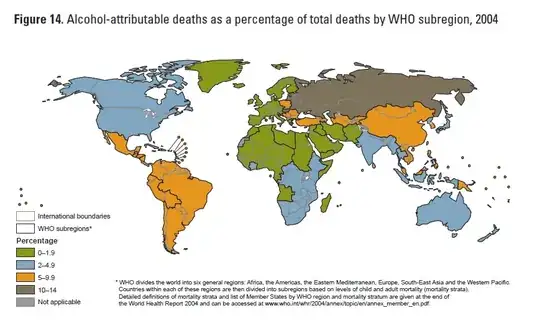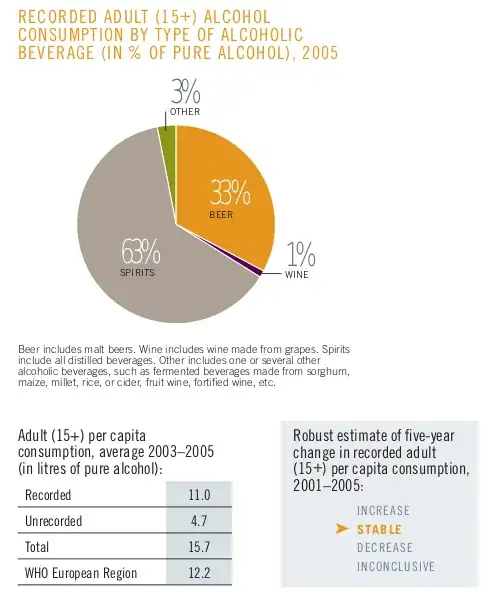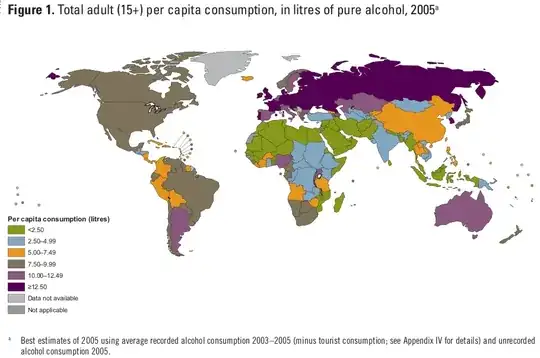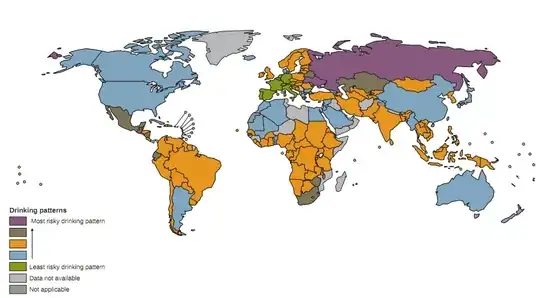According to existing evidence, it is true that Russians drink a lot of alcohol.
1. Adult Per Capita Consumption
The World Health Organization 2011 Global status report
on alcohol and health provides us with statistics in regard to average alcohol consumption per year, for people aged 15 and above, in liters of pure alcohol. Russia ranks fourth, with 15.76 liters ( of which 6.88 liters are consumed in the form of "spirits" ), more than double the world average - 6.13.
2. Alcoholism
The report provides no information specifically about alcoholism prevalence in Russia, but using The Global Information System on Alcohol and Health ( http://www.who.int/globalatlas/alcohol ) shows Russia as having the highest rate of males aged between 18 and 65, which are dependent on alcohol: 17.61%
3. Mortality
The report tells us that Russia has one of the highest proportion of alcohol-attributable mortality, but doesn't give precise numbers - most of the data in this report is given by WHO subregion. According to Wolfram Alpha, 8327 deaths per year occur due to alcohol use disorders - 0.35% of the total, much higher than the world probability of 0.16%.
However, this figure doesn't seem to be accurate according to the WHO report - which, although it doesn't give exact numbers, does say:
By far the highest proportion of alcohol-attributable mortality is in
the Russian Federation and neighbouring countries, where every fifth
death among men and 6% of deaths among women are attributable to the
harmful use of alcohol.

From the map above, we can estimate the minimum number of alcohol-attributable deaths to 10% of Russia's 2010 deaths ( 2028516 ), which gives us ~200.000, and the maximum ( 1/5 of the total ) to ~400.000. In 2004, 3.8% of all global deaths were attributable to alcohol, 6.2% for men and 1.1% for women.
As for the ethnic identity of the drinkers, from this study:
Ethnic identity of drinkers cannot be established on the basis of
available state statistics and, to the best of my knowledge, neither
state statisticians nor academic analysts have ever looked at ethnic
differentials in per capita consumption of alcohol. These
differentials are, however, significant and cannot be disregarded in
any serious analysis of the alcohol situation in the country.
According to my rough estimates people of the Muslim culture consume
on a per capita basis slightly less than half of the alcohol consumed
by Slavs and other ethnic groups in Russia.11 As the result, regions
of Russia in which Muslims constitute a significant part of the
population show lower incidence of alcohol-related mortality and
morbidity and socially disruptive alcohol abuse.
And:
The high-risk groups are mainly adult male Slavs (Russians,
Ukrainians, and Belarusians) and the main explanation of alcohol abuse
is not only the relatively high level of overall consumption of
alcohol, but the high share of alcohol consumed in the form of vodka
and samogon, as can be seen in Table 8-3. Drinking vodka results in
faster intoxication, more frequent violence, and more serious somatic
effects, particularly accidents of different types and fatal alcohol
poisonings (see Section 5 below), than drinking wine or beer. A
second, equally important factor is the mode of drinking prevalent
among Slavs, which characteristically consists of "drinking
binges"--the intermittent consumption of large quantities of alcohol
in a relatively short period of time and often without accompanying
meals. It should be noted that a small group of Russian alcohol
specialists have long suggested that total alcohol prohibition is
fruitless and that the most promising policy would be to educate the
public in "civilized" drinking. This position was never popular in the
Soviet Union and its proponents had been all but silenced during
Gorbachev's anti-drinking campaign.
In conclusion, it would appear that the widely held beliefs hold true - Russian do drink a lot, much more than the world average. It appears to be a huge problem for the country, and for many of countries that were part of USSR. Medvedev called Russia's drinking problem a "national disaster".



